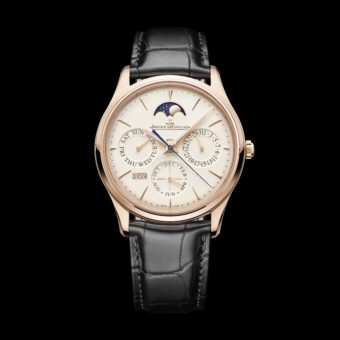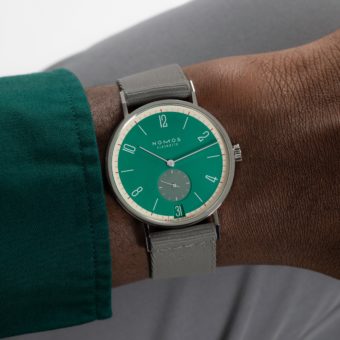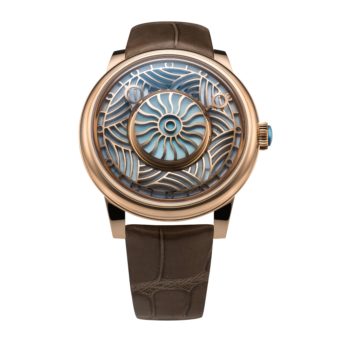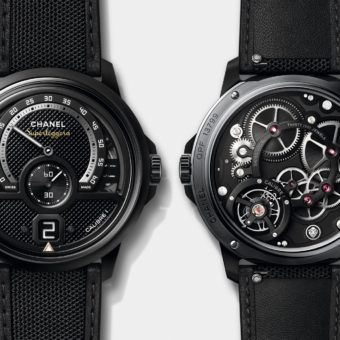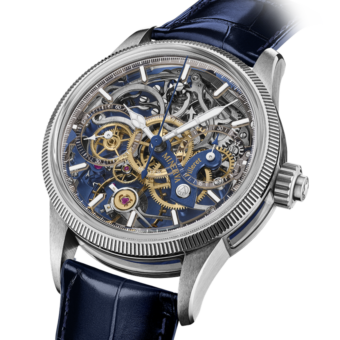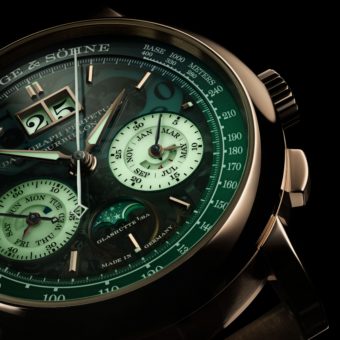MB&F founder Max Büsser is known for being bold and daring in his watch concepts, but the newest “horological machine” might represent the boldest idea yet — making a watch case out of a material that has been known to spontaneously ignite in its powdered form. But the zirconium case is just one notable facet of the new Legacy Machine Perpetual EVO, the toughest and sportiest MB&F watch to emerge from Büsser and his intrepid team of watchmaking “Friends.”
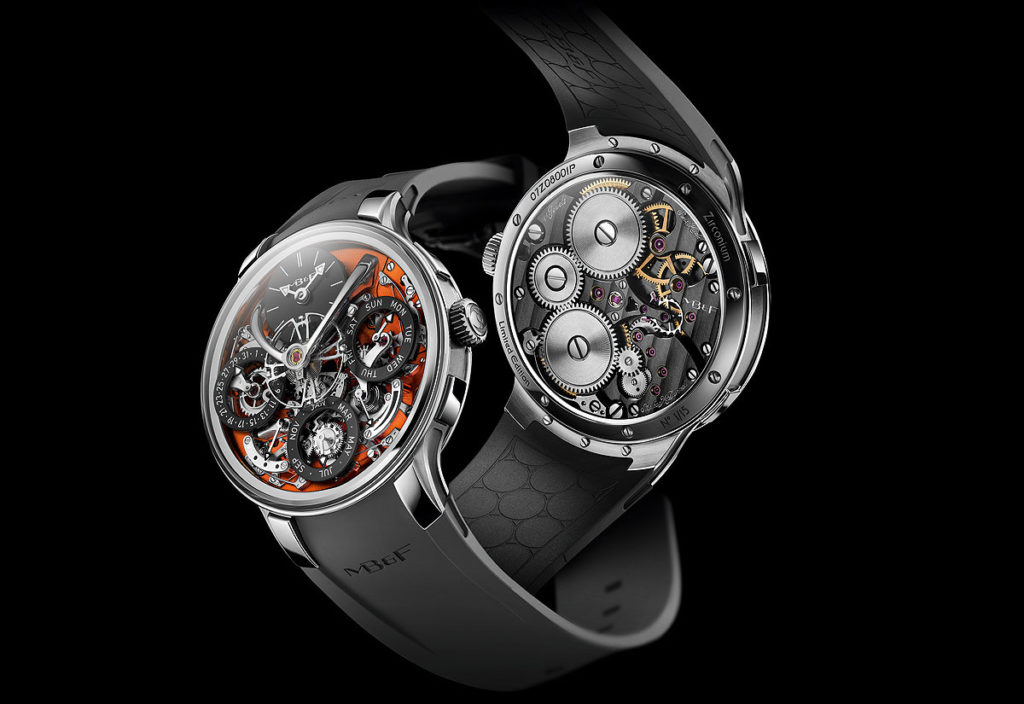
Zirconium is a silvery gray metal that is lighter than steel and more durable than titanium, and its aforementioned combustibility makes it very dangerous to machine. The LM Perpetual EVO’s new 44-mm case is made of this material, which is prized in biomedical circles for its hypoallergenic and anti-microbial properties. Its “no-bezel” construction increases the openness of the design and includes a domed sapphire crystal fused directly to the case — a configuration that required substantial redesigning of both in order to maintain structural strength while decreasing the height. The pushers for the perpetual calendar adjustments have also been reworked for tactile comfort and ease of use. The EVO is also the first MB&F watch rated at 80 meters of water resistance, complete with a screw-down crown.
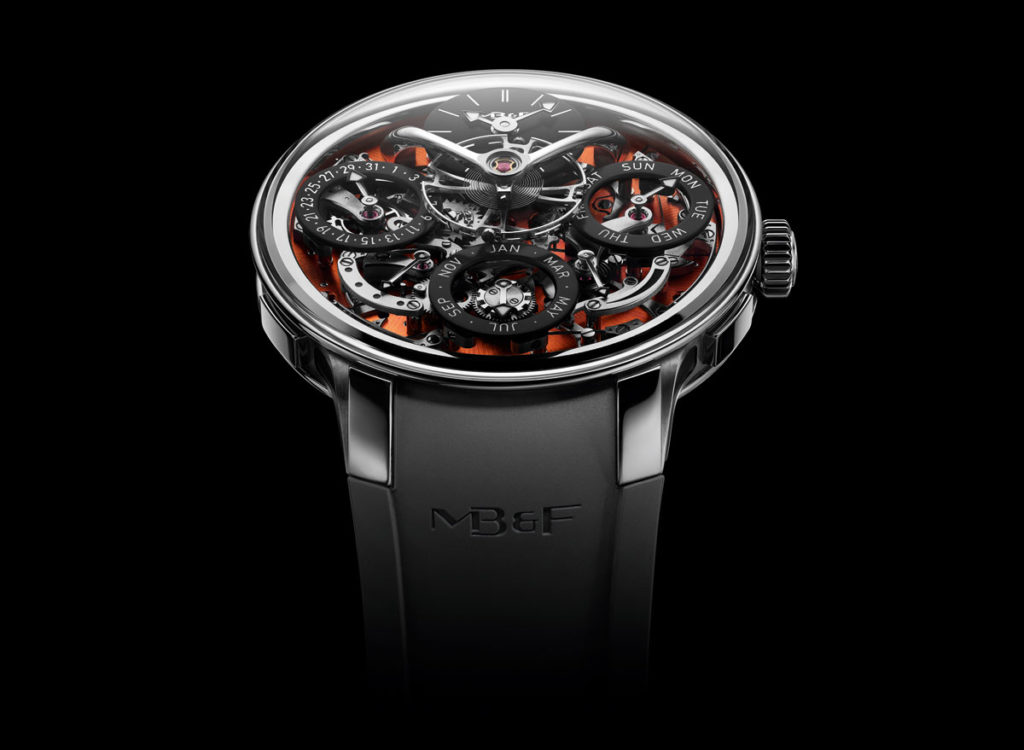
Another new element in this evolution of the LM Perpetual calendar is a “FlexRing” annular dampener, fitted between the case and the movement, which offers exceptional shock resistance along the vertical and lateral axes. The movement itself, designed and developed in cooperation with Irish independent watchmaker Stephen McDonnell, is built entirely from the ground up — no base caliber, no module — and designed with many of its most visually stunning elements on the dial side, including its large suspended balance. The manually wound, 581-part caliber differs from traditional perpetual calendar movements in a few significant respects. Instead of using a 31-day month as the “default” and fast-forwarding through the unnecessary days in the shorter months, as is the common system, it uses a default 28-day month (i.e., a non-leap-year February) and adds extra days as required, thus no skipping ahead of dates, which has the potential to jam gears. Traditional perpetual calendar mechanisms can also be easily damaged if the owner makes an inadvertent adjustment while the date is changing; in MB&F’s caliber, the adjustment pushers automatically deactivate during calendar changes, so this risk is avoided.
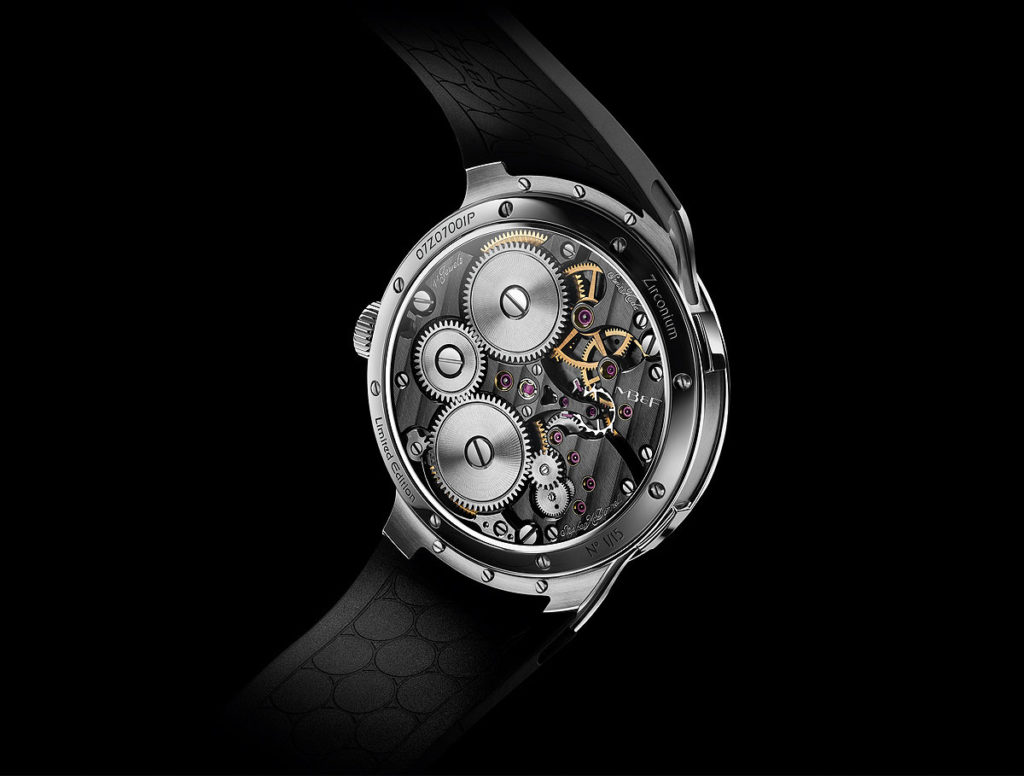
The movement accomplishes these feats with the use of a “mechanical processor” in place of the grand levier (big lever) system more commonplace in perpetual calendar calibers, which also drives the leap-year adjustment by means of a simple quick-set pusher. The huge balance wheel oscillating on the dial side is connected to the escapement in the back via an extra-long balance staff (probably the world’s longest, according to MB&F); under that massive balance are the subdials, which appear to float above the exposed mechanisms beneath them. At 12 o’clock, framed by the arches of the balance bridge, the hours and minutes are displayed on a subdial with Roman numerals and blued hands. Moving clockwise around the dial, the three other skeletonized subdials, mounted on hidden studs, display the day of the week at 3 o’clock, the month at 6 o’clock, and the date at 9 o’clock. At 4 o’clock is an arc-shaped indicator for the watch’s 72-hour power reserve and at 7 o’clock, another indicator for the leap year, equipped with a retrograde hand.
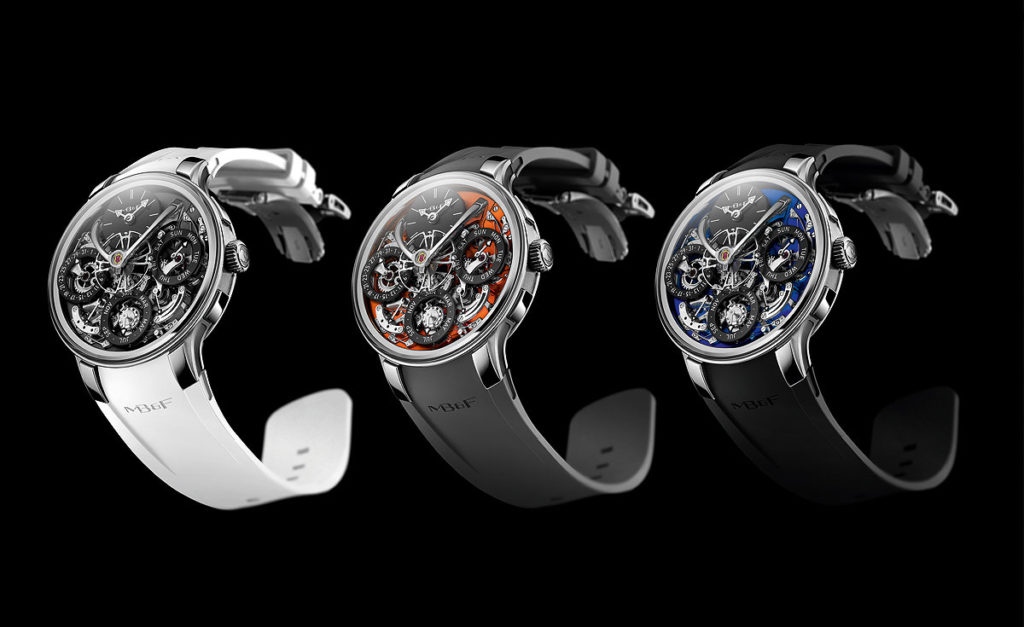
Finally, the LM Perpetual EVO offers a trio of new dial and vibrant colorways, including a model with a dial plate coated in “atomic orange,” a bright orange shade that MB&F says was highly difficult to achieve. All three versions (the other two dial plate colors are blue and black) are limited to 15 pieces each and mounted securely on rubber straps with titanium clasps. The watches are all priced at $167,000.

